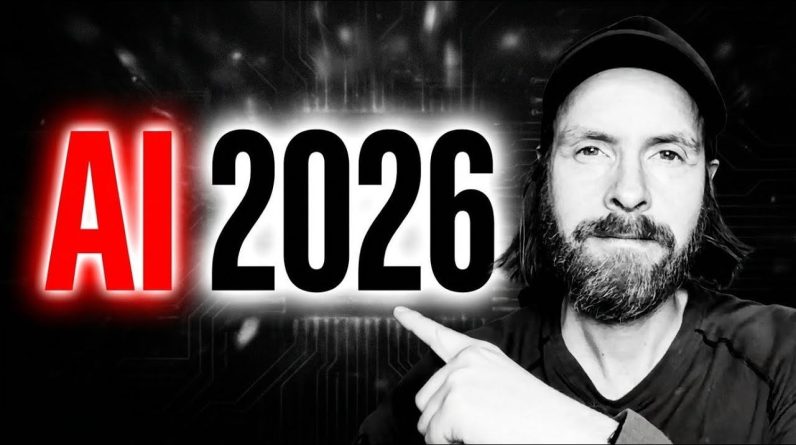
What if you could uncover the hidden blueprint behind every great story—whether it’s a bestselling novel, a blockbuster screenplay, or even a timeless classic? Imagine having the ability to dissect a narrative down to its core, revealing the mechanics behind its most gripping moments, its emotional beats, and its unforgettable characters. Thanks to innovative AI automation, this is no longer a fantasy. These tools don’t just skim the surface; they delve deep into the DNA of storytelling, offering insights that were once the domain of seasoned editors or literary scholars. With the power of Natural Language Processing (NLP) and advanced automation, you can now decode the secrets of storytelling with precision and ease.
The Nerdy NovelistNerdy Novelist explores how AI is transforming story analysis, giving writers, researchers, and creatives a powerful edge. From scene-by-scene breakdowns to identifying recurring themes and character arcs, these tools provide a structured framework for understanding what makes narratives tick. But it doesn’t stop there—AI can even generate reusable templates, helping you craft your own stories with proven narrative structures. Whether you’re curious about how your favorite stories work or looking to refine your own craft, this technology offers a treasure trove of insights that will change the way you see storytelling forever. After all, every story has its secrets—are you ready to uncover them?
AI Tools for Story Analysis
TL;DR Key Takeaways :
- AI-powered automation, using tools like Natural Language Processing (NLP) and cloud-based systems, breaks down narratives into essential components such as character actions, settings, and conflicts for deeper story analysis.
- The system provides scene-by-scene summaries, identifies recurring themes, character arcs, and structural beats, offering insights into storytelling mechanics and audience resonance.
- Reusable scene templates are generated by analyzing existing stories, allowing writers to streamline their creative process while adhering to proven narrative structures.
- Writers can benefit from data-driven insights into popular tropes, genre-specific elements, and storytelling techniques, helping them create engaging, market-ready content.
- Powered by advanced AI models like GPT-4.1 Mini, the system organizes outputs in HTML format, offering genre analysis, thematic insights, and access to public domain resources for further learning and inspiration.
At the heart of this system is AI automation, which integrates tools like Make.com, Open Router, and Google Docs to streamline the process of analyzing stories. The system carefully dissects narratives scene by scene, identifying critical elements such as character actions, settings, and conflicts. Each scene is then summarized and organized using HTML headers, creating a clear and navigable structure for deeper exploration.
Beyond scene-level analysis, the AI provide more insights into recurring themes, plot devices, and character motivations. This granular breakdown allows you to see how individual components contribute to the overall narrative. By understanding these intricate mechanics, you gain insights into how stories are constructed and how they resonate with audiences.
The Story Analysis Process
The process begins with summarizing each scene, focusing on key aspects such as:
- Plot progression – How the story moves forward and builds momentum.
- Character development – The evolution of characters and their relationships.
- World-building – The creation of immersive settings and environments.
For example, an inciting incident might be flagged as a pivotal turning point, while a climactic scene could be analyzed for its emotional intensity and resolution of conflicts. Beyond summarization, the system examines character arcs, thematic patterns, and structural beats. It identifies how characters evolve over time, the themes that unify the story, and the foreshadowing that builds anticipation. This comprehensive analysis provides a deeper understanding of storytelling dynamics, helping you identify what makes a narrative compelling and cohesive.
Expose the Secrets of Any Story With AI Automation
Gain further expertise in AI Automation by checking out these recommendations.
Creating Scene-by-Scene Templates
One of the most practical features of this system is its ability to generate reusable scene templates. By analyzing existing stories, the AI creates generalized frameworks that retain structural elements while omitting specific details. These templates act as blueprints for crafting engaging scenes in your own projects.
For instance, a template might outline the introduction of a conflict, the escalation of tension, and the resolution, without specifying characters or settings. This flexibility allows you to adapt proven narrative structures to your unique story while maintaining a cohesive flow. By using these templates, you can streamline your creative process and ensure that your scenes align with established storytelling principles.
How Writers Can Benefit
For writers, this system offers invaluable insights into the art and science of storytelling. By analyzing popular tropes and structures, you can align your work with audience expectations and create stories that resonate. The system also aids in developing detailed story bibles and outlines, making sure consistency and coherence throughout your project.
For example, if you are working on a mystery novel, the AI might highlight common elements such as red herrings, unreliable narrators, or twist endings. You can then incorporate these techniques into your story, knowing they are proven to engage readers of the genre. This data-driven approach not only refines your craft but also helps you produce content that is both engaging and market-ready.
Technical Foundations
The system is powered by advanced AI models such as GPT-4.1 Mini and Cloud Sonnet 4, which process large volumes of text to extract meaningful insights. These models summarize and analyze narratives, presenting the results in a user-friendly format. Outputs are organized using HTML formatting, making the data easy to navigate and interpret.
Key outputs include:
- Genre analysis – Identifying the defining characteristics of a story’s genre.
- Character arcs – Mapping the growth and transformation of characters.
- Thematic insights – Highlighting recurring themes and motifs.
- Scene summaries – Breaking down the narrative into digestible components.
For instance, a fantasy novel might be categorized by its use of epic quests, magical systems, and heroic archetypes, while a romance story could be analyzed for its emotional beats and relationship dynamics. This level of detail helps you understand the unique elements that define different genres, allowing you to tailor your work to meet audience expectations.
Accessing Resources for Storytelling
To further support your creative process, the system connects you to public domain resources such as IMSDB and Project Gutenberg. These repositories provide access to a wealth of scripts and books for analysis, offering a broad range of material to study and learn from.
By analyzing these resources, you can identify key narrative elements and apply them to your own work. For example, studying classic novels or screenplays can reveal timeless storytelling techniques, while analyzing contemporary works can help you stay attuned to current trends. Whether you are crafting a screenplay, novel, or short story, these tools empower you to refine your storytelling techniques and create content that resonates with your audience.
The Future of Storytelling with AI
AI-driven automation is transforming the way stories are analyzed and understood. By breaking narratives into their fundamental components and offering actionable insights, this technology equips you with the tools to understand and replicate successful storytelling techniques. From scene segmentation to thematic exploration, AI provides a comprehensive framework for mastering the art of storytelling. Whether you are an aspiring writer or an experienced storyteller, this system can help you elevate your craft and bring your creative vision to life.
Media Credit: The Nerdy Novelist
Filed Under: AI, Guides
Latest Geeky Gadgets Deals
If you buy something through one of these links, Geeky Gadgets may earn an affiliate commission. Learn about our Disclosure Policy.
Originally Appeared Here








